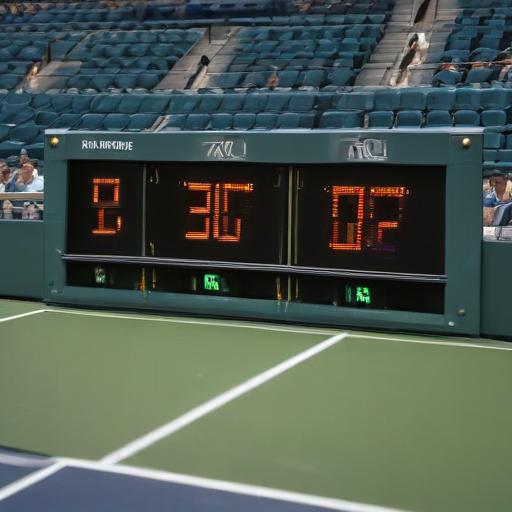U.S. Open’s revamped mixed doubles format energizes the edition as stars from both genders share the court
The U.S. Open kicked off its refreshed mixed doubles format with a burst of energy on Tuesday in New York, as spectators watched elite men and women square off in a setting that blends exhibition flair with high-level competition. From jaw-dropping net play to celebratory dances, the on-court moments underscored why this hybrid format has the power to draw in fans beyond traditional doubles enthusiasts.
Highlights on the opening day included Emma Raducanu’s surprised reaction to a blistering Carlos Alcaraz forehand winner that skimmed the net, and Novak Djokovic’s playful jig after a forehand passing shot found its mark. These scenes, along with the crowd’s collective energy, illustrated the entertainment value of seeing top players mix it up on the same court.
The conversation around the format’s fairness and sporting merit has simmered since its inception, but the day’s storyline leaned into a core appeal of tennis: watching the best female and male athletes test themselves directly against one another. Iga Świątek looked commanding against Grand Slam semifinalists Frances Tiafoe and Lorenzo Musetti from the baseline, while Jack Draper’s relentless pace challenged Raducanu and Mirra Andreeva in a way that amplified the format’s drama.
Men versus women remains a perennial talking point in tennis, and no sport does it with the same fascination as tennis does when players mix singles-style power with doubles strategy on a shared stage. Yet mixed doubles has long been something of a paradox for the sport—years ago it flourished as a marquee feature at Grand Slams, but over time has been relegated to a more secondary role as singles calendars grow gruller and players seek fewer, longer formats.
There have been bright moments to cling to. The mixed doubles dynamic was once highlighted by high-profile pairings and memorable moments, such as Serena Williams joining forces with other top players in crossover events that proved immensely popular. Those threads echo today in the struggle to balance spectacle with merit, and in the demand for stories that resonate beyond the usual suspects.
The appeal now includes a showcase of personalities. Putting players on court with unfamiliar partners and opponents reveals sides of them that don’t always come through in traditional singles or doubles play. On Tuesday, Djokovic’s dance after a line-fed moment and Draper’s sharp exchanges with the audience offered a window into how athletes adapt their swagger and focus to this format. After Draper and Jessica Pegula beat Medvedev and Andreeva to advance to the semifinals, he reminded reporters that there’s room to be “locked in” even when the event carries an exhibition vibe.
The USTA has leaned into the format’s potential by leaning on star power and a more relaxed tempo, with earlier reads like the “Mixed Madness” exhibition proving popular. As Lew Sherr, who helped lead the effort, noted, the appeal lies in tennis’s unique mix of male and female athletes competing on the same stage—a dynamic not replicated in other major pro sports. Still, critics point out trade-offs: the format can feel closer to entertainment than Grand Slam competition, and it excludes certain matchups that would normally drive interest, such as singles stars facing doubles specialists.
Looking ahead, the night’s marquee prospect features Draper and Świątek as they continue to push the pace and unleash the kind of big-groundstroke tempo that makes the format so watchable. Fans can expect more moments where precision meets showmanship, and where the best of both sexes collide in a way that tests not only skill but also partnership chemistry.
For fans and the sport alike, the mixed doubles experiment signals a broader question: how can tennis capitalize on one of its most compelling dynamics—top players from both genders competing on equal terms—without diluting the elite competition that defines Grand Slams? The early returns suggest strong potential to boost engagement, broaden appeal, and spark conversations about gender parity and the future of tennis formats.
Summary: The U.S. Open’s new mixed doubles format delivered excitement and standout moments, highlighting the enduring appeal of men and women competing on the same court while inviting debate about its place in the sport’s landscape. As the event evolves, it could redefine fan engagement, provide fresh opportunities for star power, and push tennis to think creatively about competition formats and presentation.
Notes for editors and readers:
– The day reinforced the entertainment value of mixed competition without compromising the high level of play.
– Consider tracking audience engagement metrics, social media reach for mixed doubles clips, and prize-money positioning for future installments to gauge growth opportunities.
– Potential future angles: how mixed doubles impacts young players’ development, how broadcasters can optimize pacing and framing for broader audiences, and how to maintain competitive integrity while preserving the spectacle.
